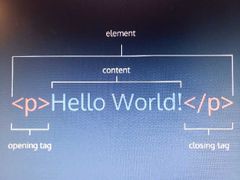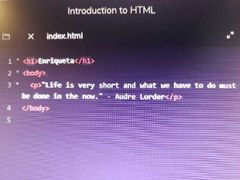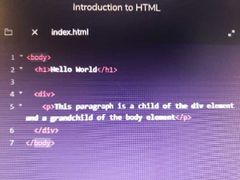![]()
![]()
![]()
Use LEFT and RIGHT arrow keys to navigate between flashcards;
Use UP and DOWN arrow keys to flip the card;
H to show hint;
A reads text to speech;
4 Cards in this Set
- Front
- Back
|
What is HTML? |
•HTML is the skeleton of all web pages. •HTML stands for HyoerText Markup •A makeup language is a computer language that defines the structure and presentation of raw text. •In HTML, the computer can interpret raw text that is wrapped in HTML elements. •HypetText is text displayed on a computer or device that provides access to other text through links, also known as hyperlinks. |
|
|
HTML Anatomy |

HTML is composed of elements. These elements structure the page and define its content. •HTML Element (or simply, element) - a unit of content in an HTML document formed by HTML tags or text or media or contains. •HTML Tag - the element name surrounded by an opening (<) and closing (>) angle bracket. •Opening Tag - the first HTML tag used to start an HTML element. The tag type is surrounded by the opening and closing angle bracket. •Content - The information (text or other elements) contained between the opening and closing tags of an HTML element. •Closing Tag - the second HTML tag used to end an HTML element. Closing tags have a forward slash (/) inside of them, directly after the left angle bracket. |
|
|
The Body |

One of the key HTML elements we use to build a webpage is the body element. Only content inside the opening and closing body tags can be displayed to the screen. <body> </body> Once the fule has a body, many different types of content - including text, images, and buttons - can be added to the body. |
|
|
HTML Structure |

HTML is organized as a collection of family tree relationships. •In this example the <p> element is a child of the <div> element and a grandchild of the <body> element. The <h1> and <div> elements are children to the <body> element and are considered siblings because they are at the same level. |

